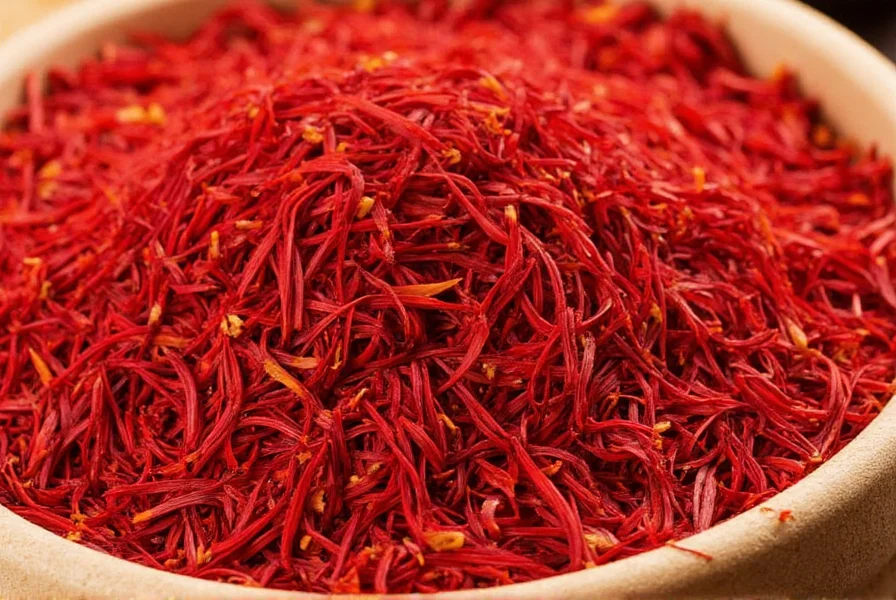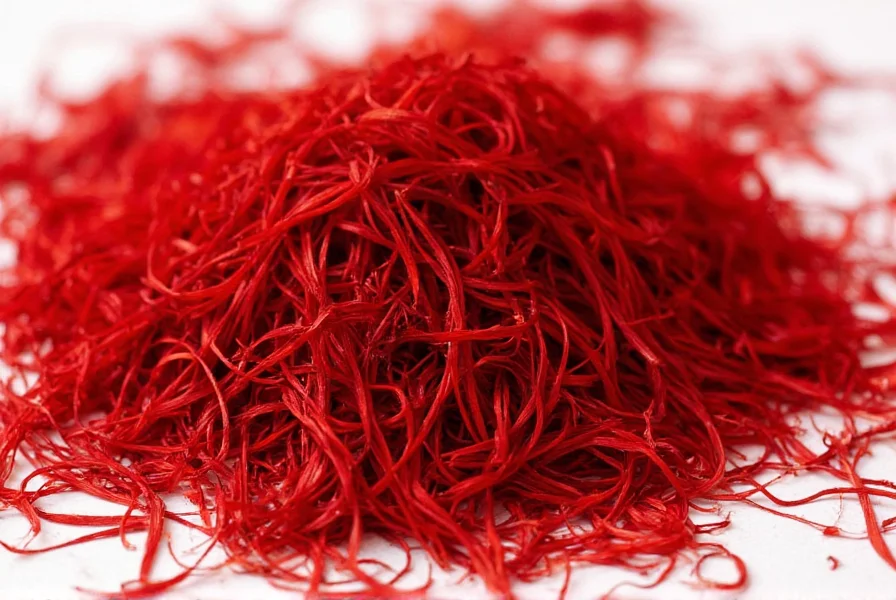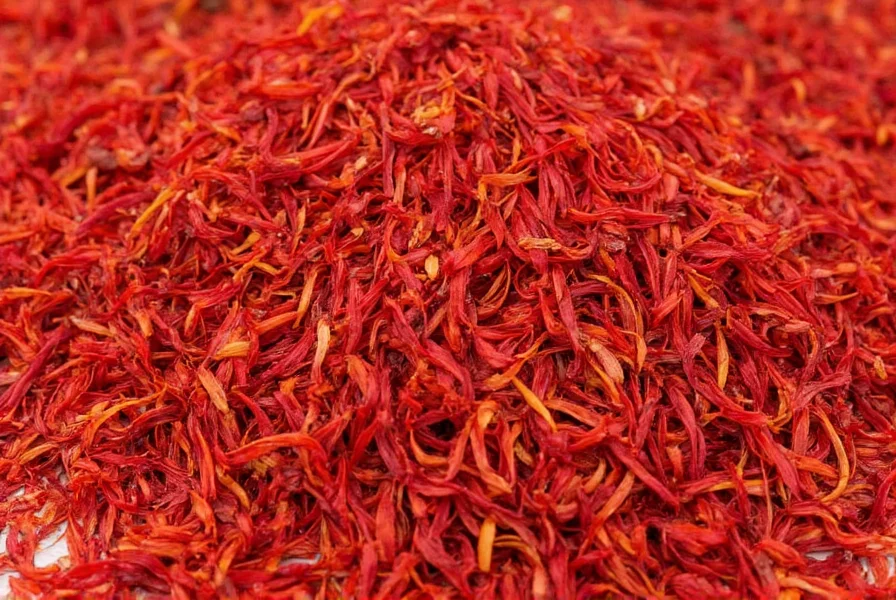Understanding saffron grading is essential for both home cooks and professional chefs seeking authentic flavor profiles. Saffron, the world's most expensive spice by weight, derives its value from the painstaking manual harvesting of Crocus sativus flower stigmas. The grading system primarily evaluates the proportion of red stigma to yellow style present in the final product, directly impacting its coloring strength, flavor intensity, and market value.
Decoding Saffron Grading Terminology
Saffron grading varies slightly by region but generally follows international ISO 3632 standards that measure crocin (color), picrocrocin (taste), and safranal (aroma) content. The "amber" designation specifically indicates a middle-tier product that balances cost and quality. While premium grades like 'coupe' or 'sargol' contain only the crimson red stigmas, amber saffron incorporates a measured amount of the yellow styles attached to these stigmas.
| Saffron Grade | Red Stigma Content | Coloring Strength | Typical Culinary Use |
|---|---|---|---|
| Coupe/Sargol | 100% red stigma | Very high (250+) | Delicate dishes, desserts, premium applications |
| Amber/Mongra | 70-80% red stigma | Moderate-high (200-240) | General cooking, rice dishes, sauces |
| Mancha/Lacha | 50-60% red stigma | Moderate (150-190) | Hearty stews, strongly flavored dishes |
Identifying Genuine Amber Saffron
When evaluating amber saffron quality, examine both visual characteristics and performance in water. Authentic amber saffron displays a gradient from deep red at the stigma tips to golden yellow at the style ends. When steeped in warm water, genuine saffron gradually releases a rich golden-yellow hue over 15-20 minutes, never producing an immediate intense color or leaving dark particles. Counterfeit products often use safflower or marigold threads dyed with turmeric, which release color instantly and create a murky solution.

Practical Applications in Cooking
Chefs often select amber saffron for dishes where moderate coloring strength suffices and the slightly more economical price point makes sense for larger batches. This grade performs exceptionally well in Spanish paella, Italian risotto alla Milanese, and Persian tahdig, where the cooking liquid helps extract maximum flavor. For optimal results, always toast threads lightly before steeping in warm liquid for 15-20 minutes to activate flavor compounds. A standard measurement is 0.1 grams (about 20 threads) per serving for noticeable color and flavor without overwhelming bitterness.
Storage Considerations for Maximum Shelf Life
Proper storage significantly impacts saffron's longevity and potency. Amber saffron maintains peak quality for 12-18 months when stored in an airtight container away from light, heat, and moisture. Vacuum-sealed packaging with oxygen absorbers extends shelf life to 24 months. Never store saffron in the refrigerator due to humidity fluctuations, and avoid clear containers that expose threads to light. The spice has passed its prime when threads become brittle, lose their characteristic hay-like aroma, or fail to produce a vibrant golden infusion.

Common Misconceptions About Saffron Grades
Many consumers mistakenly believe that darker saffron always indicates superior quality, but this often signals artificial coloring. Authentic high-grade saffron displays a rich crimson-red, not near-black. Another misconception suggests that amber saffron is 'fake' or inferior, when in reality it represents a legitimate middle grade with specific culinary applications. The presence of some yellow style in amber saffron doesn't indicate poor quality but rather a different harvesting and processing approach that maintains acceptable flavor while reducing waste.
Evaluating Value Across Saffron Grades
When determining whether amber saffron provides good value, consider your specific culinary needs rather than simply chasing the highest grade. For everyday cooking applications like rice dishes or soups, amber saffron delivers excellent performance at approximately 30-40% less cost than premium grades. Reserve top-grade saffron for delicate preparations where maximum coloring strength and subtle flavor nuances matter most. Always calculate cost per serving rather than per gram, as higher grades require smaller quantities to achieve equivalent results.
What distinguishes amber saffron from other saffron grades?
Amber saffron contains approximately 70-80% red stigmas with the remainder being yellow styles, creating its characteristic color gradient. This mid-grade saffron offers moderate coloring strength (200-240 on ISO scale) compared to premium coupe saffron's 100% red stigmas and higher coloring strength of 250+.
How can I verify if my amber saffron is authentic?
Authentic amber saffron shows a gradual color transition from red to yellow. When steeped in warm water, it releases color gradually over 15-20 minutes, producing a clear golden-yellow liquid. Counterfeit products often release color immediately and create cloudy solutions due to artificial dyes.
Is amber saffron suitable for traditional Spanish paella?
Yes, amber saffron works well for paella and similar rice dishes. Its moderate coloring strength provides sufficient coloration without overwhelming the dish. Many professional chefs actually prefer amber grade for paella as it delivers excellent flavor at a more economical price point than premium grades.
How much amber saffron should I use per serving?
For most applications, 0.1 grams (approximately 20 threads) per serving provides optimal color and flavor. Always toast the threads lightly and steep in warm liquid for 15-20 minutes before adding to your dish. Adjust slightly based on recipe requirements and personal preference, but avoid exceeding 0.15 grams per serving to prevent bitterness.
Does amber saffron expire, and how can I tell?
Amber saffron maintains peak quality for 12-18 months when stored properly in an airtight container away from light and moisture. Signs of deterioration include brittle threads, diminished hay-like aroma, and reduced coloring power (failing to produce vibrant golden infusion after 20 minutes steeping). Properly stored, it remains usable for up to 24 months though with gradually diminishing potency.











 浙公网安备
33010002000092号
浙公网安备
33010002000092号 浙B2-20120091-4
浙B2-20120091-4